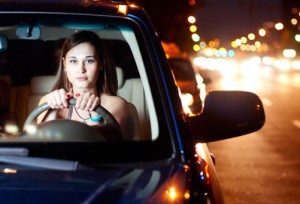 It can take awhile to adjust to the end of daylight saving time. Less daylight means you are more likely to be driving in the dark, when visibility is lower, and facing a greater risk of auto accidents.
It can take awhile to adjust to the end of daylight saving time. Less daylight means you are more likely to be driving in the dark, when visibility is lower, and facing a greater risk of auto accidents.
In the height of summer, it may not get dark until around 8 p.m. But in winter, the sun is on its way down well before 5 p.m., and the sky can be completely dark while you are heading home from the office.
Driving in rush-hour traffic or negotiating crosswalks is difficult enough in daylight. Driving or walking is far more dangerous at night. When the sun sets during rush hour, we face the risks of high-traffic volume paired with low-visibility and other nighttime driving factors.
Citing statistics from the National Highway Traffic Safety Administration, a 2009 report in Forbes points out that nearly half (49%) of all fatal car accidents happen at night – even though there is more traffic during daylight hours. The fatality rate per mile of travel at night is about three times that during daylight. Longer nights, therefore, mean more accidents.
Dangerous Driving Behavior at Night
Not only is it more difficult to see in the nighttime hours, more people take risks such as driving after drinking or failing to wear seatbelts at night.
While only 18 percent of fatal daytime accidents involve alcohol, about 54 percent of fatal crashes at night are alcohol-related, Forbes reported.
And of those killed in auto accidents at night, two-thirds are not wearing safety belts. During the day, that rate is closer to one-half.
Simply being aware of how the early darkness affects your driving can go far in keeping you safe from harm. Knowing your risks of a serious accident are elevated can help you plan accordingly, being more aware and compensating for the lack of visibility at night.
Don’t follow other vehicles too closely after dark. You aren’t likely to see what’s going on in front of them, and a sudden stop could lead to a serious accident.
Also, be certain to wear your seatbelt no matter what time of day it is. Just because it’s late in the day doesn’t mean it’s time to relax your safety practices.
